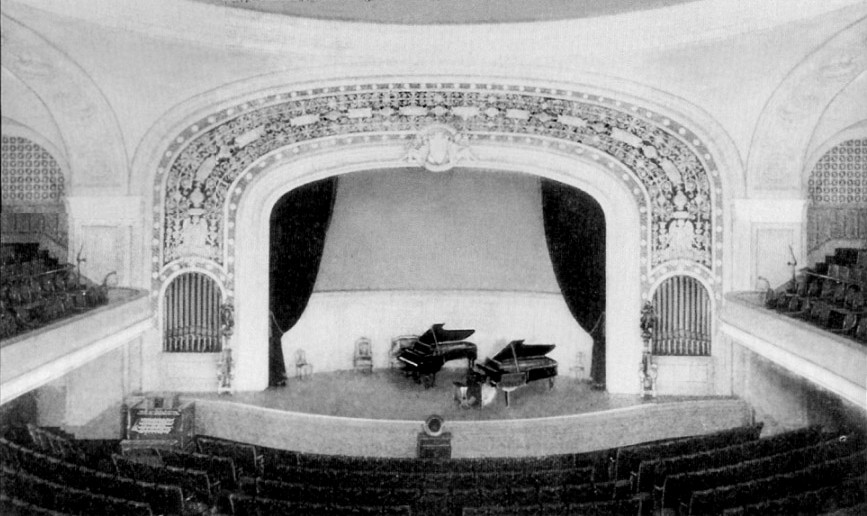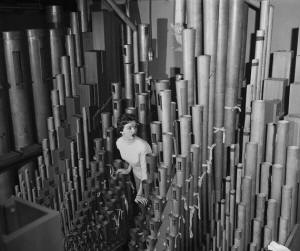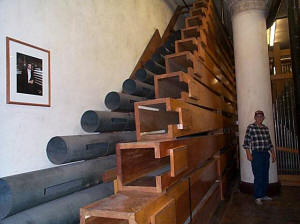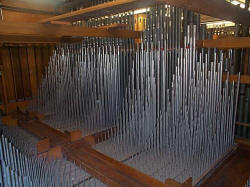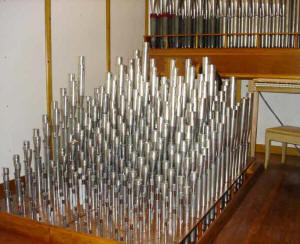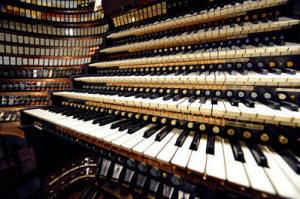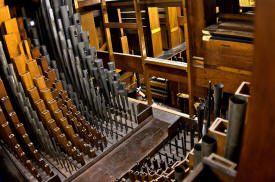The Wanamaker Store
The Wanamaker Store
Wanamaker's - A Pipe Organ Tradition
The Grand Court Organ Commanding the organ is a massive console with six ivory keyboards and 729 color-coded stop tablets. There are 168 piston buttons under the keyboards and 42 foot controls. The console weighs 2.5 tons; the entire instrument weighs 287 tons.
Are there really eight Tibias? According to Andrew Nardone, Organ Shop Assistant, most are Tibias in name only:
"Here, as I think is the case also in Atlantic City, when you have an organ of this size, how many names can you think of for 8' flutes? The original organ contained a Tibia Plena and Tibia Clausa in the Great, but both were merely large scale flutes and did not trem. The first expansion saw the Tibia Plena relocated to a new chest and revoiced on twice the pressure, and a Mezzo Tibia was added. The 1904 Tibia slot was filled with a new Tibia Minor.
Even with all the new construction, there were still no trems added to the Great or its expansion chests and all were open wooden flutes. As for the Pedal, the Tibias are the same story. Tibia I 8 & 4 are from the first expansion and are two independent ranks. Again, these were conceived as large flutes but not necessarily Tibias and do not trem. Originally, they were called Gross Flutes. The II Tibias 8 & 4 are a unit with the Open Flute 16 and date from the second expansion. The original 1904 stoplist had a stop called Contra Flauto 16 in the pedal, which still exists cut down as the Open Quint 10 2/3. This stop looks like a 16' Concert Flute, with large
protruding caps and inverted upper lips. The Open Flute unit 16/8/4 seems to be an attempt to improve upon the original Contra Flauto on higher pressure, and its pipes are constructed in the same way.
The only two REAL Tibias we have are the two in the Orchestral, which do trem and behave like Tibias. There is a Tibia Plena and Tibia Clausa."
The organ contains seven 32' stops, including a 32' Sub-Principal on the great and a 32' Contra Gamba. The 88-rank string division (with pipework by Kimball) occupies the largest organ chamber in the world - 60' wide by 30' long and 22' high.
On June 2010, the organ grew by one more rank. A new rank, the "Centennial Tuba" was installed on the 7th floor. The Tuba pipes are hooded, bent over at the top, so the sound is projected directly into the grand court in the manner of a Trompette en Chamade. The organ now contains 463 ranks.
From a monumental beginning in 1904, the organ continues to amaze and delight listeners—from all over the world.
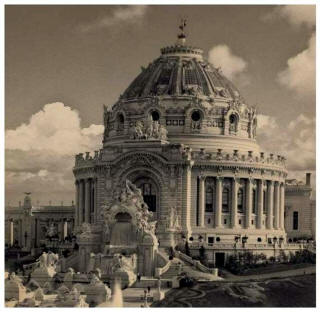
1904 World's Fair - Festival Hall
Original home of the Wanamaker Organ Ten-rank Vox Humana Chorus
(two 16' ranks; eight 8' ranks)
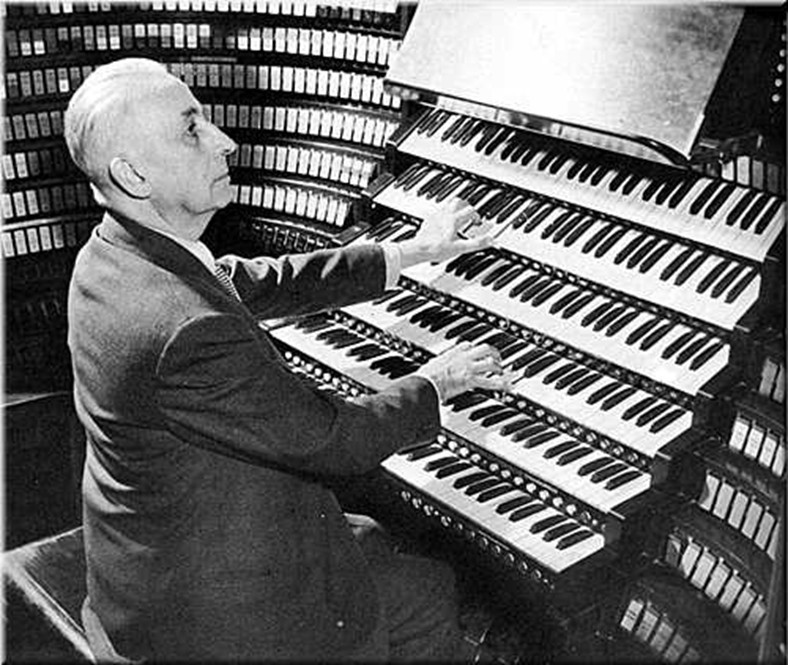
Marcel Dupre at the Wanamaker Organ. Dupre, organist at the Notre Dame Cathedral in Paris, was a regular performer on the instrument during the 1920s.
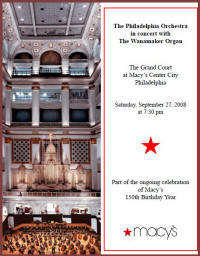
On Saturday, September 27, 2008, the Philadelphia Orchestra returned to the
Grand Court to perform Joseph Jongen's "Symphonie Concertante" wth Peter Richard Conte as soloist. This piece, commisioned by Rodman Wanamaker, had never been performed on the instrument. The event was part of the ongoing celebration of Macy’s 150th Birthday Year.
|
Walt Strony at the Wanamaker Organ |
|
The late Keith Chapman performs the Finale from Widor's Symphony No. 2
The (Random Act) Hallelujah Chorus with the Opera Company of Philadelphia |
The largest organ in the world?
Well... in the theatre organ world, we often look at the number of ranks as an indication of size. For example, most would agree that a 4/36 Wurlitzer is larger than a 5/21 Wurlitzer. Consider this: the Wanamaker Organ is 6/463, while the the Atlantic City Convention Hall organ is 7/449.
However, the Wanamaker organ is not highly unified, so the Convention Hall, with 33,112 pipes, exceeds the Grand Court Organ's 28,482 pipes. The Convention Hall organ is recognized by The Guinness Book as the largest organ, which also lists its Grand Ophicleide 16′ (at 100" wind) as the loudest organ stop in the world. But - the Grand Court organ reputedly weighs almost twice as much (287 tons opposed to the approximated 150 tons of the Auditorium Organ), so feel free to discuss...

